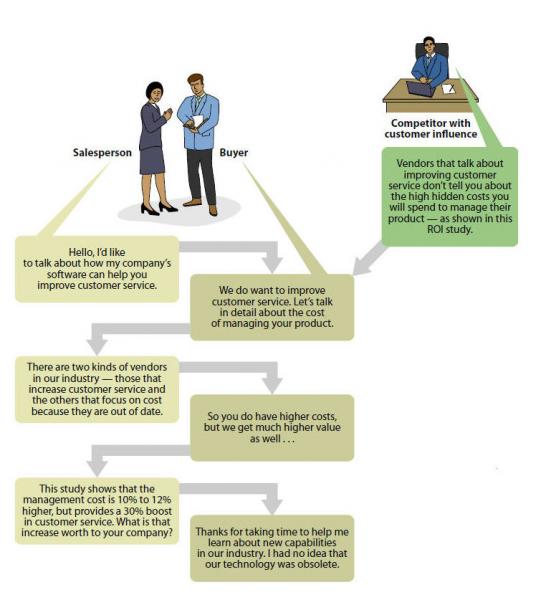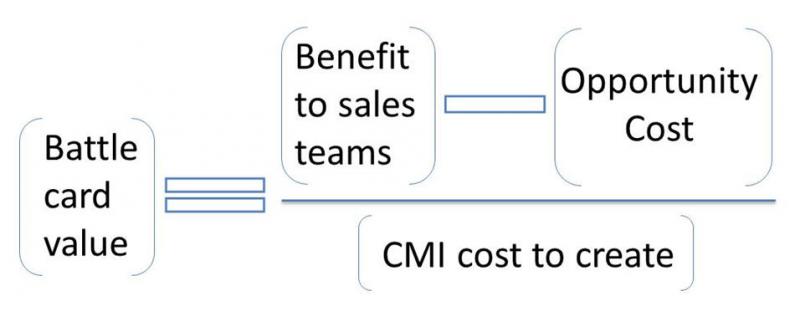What’s The Value Of Battle Cards?
During the past few months, our sales enablement team has researched and written about battle cards. We've spoken with more than 40 companies, including CMI leaders and sales professionals, to understand how sales reps use battle cards, what role a battle card plays in fueling customer conversations, and what CMI organizations can do to build more value into their battle cards.

During our interviews, sales reps told us that they need battle cards for effective selling today. Reps spend their time identifying a customer’s problems and building a shared vision to solve them. Competitors also engage in a similar journey, and sales reps told us that battle cards help them to:
Anticipate traps. Sales reps need to be aware of ideas that competitors will suggest to the customer early in the sales cycle, but that the customer won’t bring up until the final stages of a purchase. One rep told us of a situation: “A competitor’s rep told the customer that we have a lot of hidden costs – that we don’t include them in our early proposals, but that we will ‘change our tune’ later.” How do you prepare your sales reps for competitive traps?
Respond to questions. Sales reps must be able to answer their customer’s questions and recognize the more subtle issue behind the question – especially those issues that originate with statements from a competitor. A simple dialog shown in the graphic illustrates how a competitor will influence the questions that customers ask. How do you anticipate competitor’s questions and equip sales reps to respond?
Even for executives who agree that battle cards are critical, few can quantify the value so that they know how much to invest in CMI activities. As a result, CMI teams create a stream of battle cards, but without the right data – or a way to get data – to create a business case that justifies building battle cards. Creating a business case for battle cards will require data to:
Calculate benefits. CMI leaders need to measure their value to sales results, but battle cards are only one of many deliverables that sales teams use for insights, let alone the skill and effort of sales reps actually doing the selling. Most executives who struggle with this question will maintain the status quo in the absence of compelling facts to drive change. How are you measuring the value of battle cards?
Articulate costs. CMI leaders can estimate time spent by analysts and contributing sales reps in creating a battle card, but CMI teams often repurpose content from other projects, blurring any analysis of the effort required. The hidden cost of sales support currently exceeds $166,000 per sales rep per year – and part of that number includes CMI. How will you determine whether you are spending too much or too little?
Identify opportunity costs. Sales leaders view CMI as a fixed cost and a zero-sum game – meaning that the resources already exist at corporate and that reps should try to get whatever support they can rally to their accounts. Creating CMI as a shared service without any cost to sales reps results in an inefficient distribution of resources – and CMI teams tend to respond to the highest-profile problems or the most vocal account executives. What is the opportunity cost of what your CMI team could be doing?

Forrester will continue working on battle cards, including ways to measure the value that they make on selling activities. What is your experience? Have you seen compelling metrics? Does your company have an innovative approach? What creative ideas do you have?
